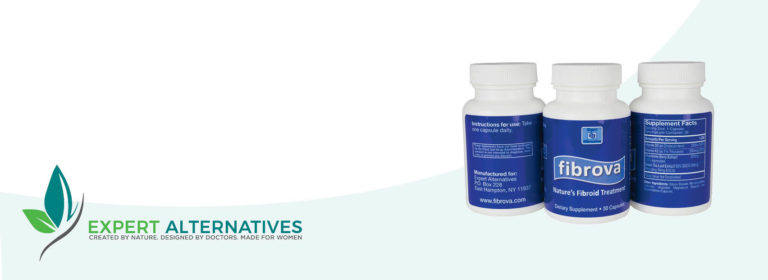As Reported here in the New York Daily News by Katie Charles.
Now the director of gynecology at Mount Sinai, Charles Ascher-Walsh founded the New York Fibroid Center 6 years ago. Every year, he sees between 300-500 patients who have fibroids.
WHO’S AT RISK:
Fibroids are non-cancerous tumors of the muscle wall of the uterus. A recent autopsy study found them in 50% of all women. “Fibroids are very common,” says Ascher-Walsh. “We don’t know why women get them, though it seems there is something inherent to the way the uterus works that causes fibroids to form.” Fibroids can be asymptomatic–in which case some women will never know they have them–but doctors estimate that as many as 30% of all women will have some symptoms from fibroids in their lifetime.
All menstruating women are at risk of fibroids, through teenagers are at a lower risk. “They start to occur in women’s 20s, and then they get smaller when women go into menopause,” says Ascher-Walsh. “So they’re a problem forwomen in their 20s to 50s.” He notes that African-American women are at slightly higher risk, but that fibroids “don’t spare any ethnicity.”
Fibroids fall into three main categories: those that bulge into the cavity of the uterus, those that form within the muscle wall, and those that form on the outside of the wall. Over time, fibroids can grow extremely large, even several times the size of the uterus itself. “The uterine wall is only two centimeters, and fibroids can grow up to 20 centimeters in size,” says Ascher-Walsh. “They can be a combination of all three types, starting inside the cavity and growing outside too.”
One thing that does not increase your risk of fibroids is taking birth control pills. “On average, the pill doesn’t change fibroid growth either way,” he says adding that in some cases, the pill can actually help people control the symptoms of their fibroids.
SIGNS AND SYMPTOMS:
The primary warning sign for fibroids is bleeding. “The most common symptoms are irregular periods–heavy periods, bleeding between periods, and pain,” says Ascher-Walsh, “When the fibroids get very large, you can feel very generalized pain or pressure in your abdomen or pelvis.” Because fibroids grow from one cell, they tend to have one blood supply; when they outgrow it, they often begin causing pain.
Fibroids can cause complications during pregnancy, and make it harder to become pregnant in the first place. In fact, many of Ascher-Walsh’s patients are referred to him by fertility clinics. “Fibroids that bulge into the cavity of the uterus decrease fertility by half, and increase the risk of spontaneous miscarriage,” says Ascher-Walsh. “In pregnancy, fibroids can cause preterm delivery and pain, or cause the baby to malpresent–which prevents the baby from coming down in a normal way–requiring a C-section.”
TRADITIONAL TREATMENT:
The treatment of fibroids includes watchful waiting, medication, non-surgical therapies, minimally-invasive surgeries like myomectomy, and in some cases, hysterectomy. “There are medications that shrink fibroids temporarily, like leuprolide, a drug that shuts your body down hormonally and makes you feel like you’re going through menopause,” says Ascher-Walsh. “But it’s only temporary, and is usually given when women are anemic and need to build their red bloods cells back up to have surgery.”
Two new non-surgical treatments are minimally invasive and very promising. Uterine fibroid embolization shoots little pellets into the uterus that cut off blood supply to the fibroids, causing them to shrink, and MRI-guided ultrasound therapy for fibroids uses ultrasound waves to break down proteins in the fibroids. The problem with these new therapies is that not enough is known about their effect on future fertility. Surgery is the main treatment for women with symptomatic fibroids. Traditionally a hysterectomy surgery– which involves removing the uterus–was done through a large incision in the abdomen, with a recovery period of 4-6 weeks. Now most patients can have hysterectomies done laparoscopically, with pinhole incisions and micro-instruments.
Another surgical option is myomectomy, which removes only the fibroids, instead of the whole uterus. Traditionally, myomectomy was seen as an option for women seeking to have children in the future, but it is increasingly sought by women who simply do not want to have their uterus removed. Thanks to new technology, including a robotic surgical device, it’s become an outpatient treatment with a shorter recovery time (2- 3 weeks).
RESEARCH BREAKTHROUGHS:
Gynecologists were actually some of the leading pioneers of laparoscopic surgery, which has radically decreased hospital stay and recovery times over the past twenty years. Now, researchers are hunting for even less-invasive treatment options. “There’s research being done in clinical trials right now on radiofrequency oblation of fibroids–that’s sticking needles into the fibroids,” explains Ascher-Walsh. “The neeldes emit radio frequency that destroys the muscle of the fibroids.”
Other promising research is investigating new medications, including anti-progestins, that may work to shrink fibroids more effectively than the current generation of drugs.
QUESTIONS FOR YOUR DOCTOR:
If the doctor recommends a hysterectomy, a good question is “What alternatives are there? Can my problem be treated in a less invasive way?”
Some doctors prefer particular treatments over others, so Ascher-Walsh advises women to see more than one doctor before they make a decision. If you have decided to move ahead with a myomectomy, be sure to ask your surgeon, “How many times have you done this surgery before?” Ascher-Walsh recommends that patients seek out a doctor who has done 30-50 similar surgeries.
WHAT YOU CAN DO:
Get informed. Dr. Charles Ascher-Walsh’s center hosts a patient-friendly Web site with information on diagnosis, treatment options and research studies. For links to many other informational Web sites, including chat rooms and support groups, see fibroidcenterofnewyork.com
Get a second opinion. “Most women are so comfortable with their ob-gyn, they don’t want to seek out someone else who is a more practiced surgeon,” says Ascher-Walsh. Make sure you know the full range of your options, and whether laparoscopic surgery is among them.



